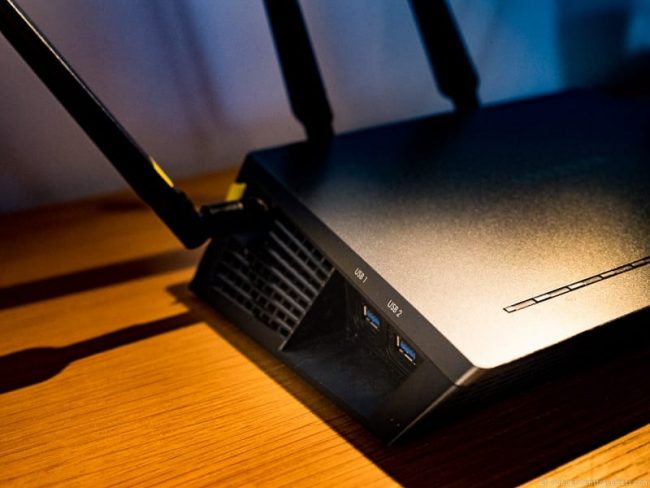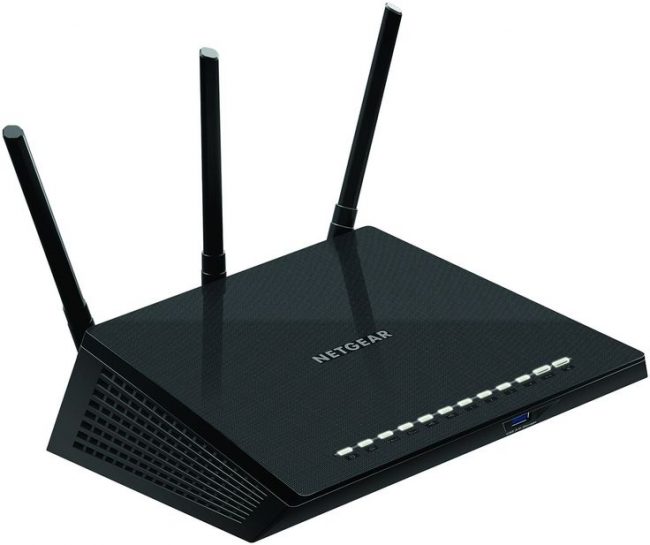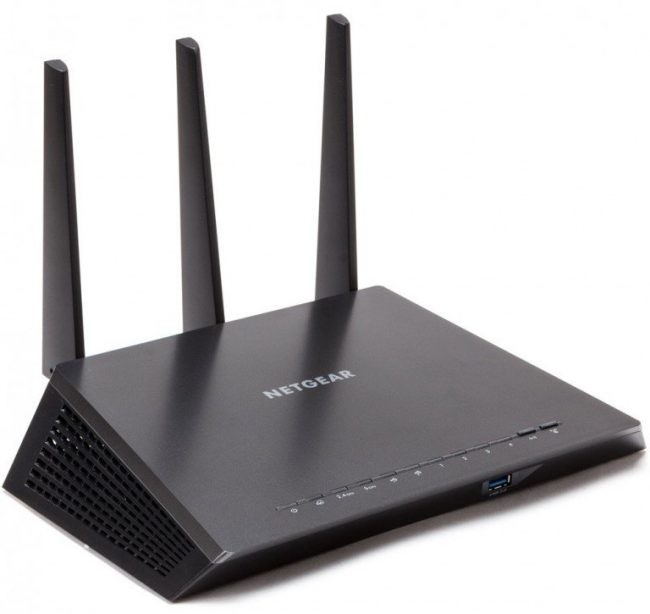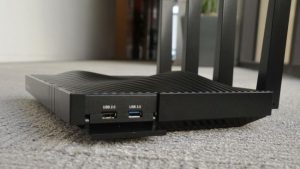 Finding the Right Router,Best Rated Netgear WiFi Router
Finding the Right Router,Best Rated Netgear WiFi Router
In today’s world, a router has become a must-have device with its advantages in simplifying connectivity.
With the gaggle of connected home products, smart TVs, smartphones, and other mobile devices ruling our lives, it’s more important than ever to outfit your home or business with a wireless router that can handle the increased demand for Wi-Fi connectivity.
When choosing a new router, you should consider the size of your coverage area and the number of clients, as well as the types of devices that will connect to the router.
Granted, not everybody needs the kind of performance that you get with the latest and greatest models, and there’s no reason to pay for features that you will likely never use,
but if you have several family members vying for the bandwidth for things like streaming video and playing Overwatch online, a new router can make a world of difference and help keep the peace.
We guide you through choosing a router that will handle your current and future wireless networking needs, and offer our top picks to get you started.
Netgear knows exactly how to make the best of the best when it comes to wireless routers. To make your choice easy, we have reviewed the five Best Netgear Wireless Routers
NETGEAR WIRELESS ROUTERS COMPARISON GUIDE
NETGEAR NIGHTHAWK AC1750 ROUTER (R6700-100NAS)
With three external antennae, the NETGEAR Nighthawk R6700-100NAS AC1750 assures you of transmission of Wi-Fi signals throughout you house.
This is a smart dual band router, with a frequency of 2.4 GHz and 5.0 GHz. Its maximum speed is 450Mbps and 1300Mbps on both frequencies respectively.
The NETGEAR Nighthawk AC1750 Smart Wi-Fi Router delivers extreme Wi-Fi speed for gaming up to 1750Mbps.
The Dual Core 1GHz processor boosts wireless & wired performance.
High-powered amplifiers and external antennas increase range for whole-home mobility, while Beamforming+ boosts speed for mobile devices, up to 100% faster.
The router has one USB 3.0 that can be used if external devices are in use. Further, there are four LAN ports featured on the router.
Being a smart router, it prioritizes your bandwidth for streaming both songs and movies, and ensures no lags in gaming.
It is worth noting that the router’s bands can function together.You can use Netgear’s genie App which is an easy way to manage and monitor your router.
It allows you to access all the features of your router without having to boot up your computer. You can share and stream music or videos and set up parental controls and more.
The genie app doesn’t work when connected to the guest network and doesn’t work with wireless extender or repeater. It’s a useful app if you want to monitor and perform maintenance and troubleshooting the router.
| [wp-svg-icons icon=”plus” wrap=”i”]Pros | [wp-svg-icons icon=”minus” wrap=”i”]Cons |
|
|
NETGEAR N750 DUAL BAND ROUTER (WNDR4300)
This is a dual band router measuring 5.86 x 2.99 x 9.21”, with both bands working concurrently to ensure minimal interference. It has a maximum speed of 750 Mbps, making a good device when it comes to gaming. It is also has Advanced QoS for excellent HD streaming.
Other features in the router include Readyshare USB access (two USB 2.0 ports) as well as Readyshare printer.
The router supports VPN and WPA2 for maximum security. However, this a router only, and it will require a modem. It has four Gigabit LAN ports in case a wired connection is required.
The N750 is an easy Editors’ Choice pick because of its advanced features, easy setup, and breathtaking performance in the 5GHz band.
The N750’s 2.4GHz-band performance is well above average and it’s more than adequate for connecting wireless devices for web surfing, email, and other light bandwidth tasks.
If you plan to do a lot of large file transfers or media streaming, the N750 may be the best router on the market for those jobs.
My one criticism is that the USB drive support can be flaky.
I still have yet to see a device that can handle being a router and a NAS and perform both functions excellently.
The N750 is decent at handling lighter file-sharing and streaming tasks
Specs and Design
The N750 ships with a stand so you can position it horizontally or vertically.
It has a USB 2.0 port, four Gigabit Ethernet LAN ports, and a WAN port.
There’s also a button to power the router off. You’d be surprised how many routers do not have a power button.
If you want to do a hard reset, you have to fiddle with wires or go into the router’s management interface—and either is a hassle.
The design does not differ much from Netgear’s N600 (WNDR3700).
The front LEDs include one that indicates the status of a connected UBS device and when the device is safe to remove.
There’s also a WLAN on and off switch, which powers up the wireless radios, and a WPS button to automatically connect WPS-supported wireless clients.
Although Netgear doesn’t typically disclose hardware specs, I can confirm that the router uses Broadcom chipset.
The 5GHz radio is equipped with three stream antennas, and the 2.4GHz radio uses 2×2 antennas.
This accounts for the unbelievable performance at the 5GHz band and the better than average performance at 2.4GHz —which is fine.
| [wp-svg-icons icon=”plus” wrap=”i”]Pros | [wp-svg-icons icon=”minus” wrap=”i”]Cons |
|
|
You want the 5GHz band to scream when handling intense bandwidth tasks.
The problem is you need to have wireless clients that also support the three stream technology to take advantage of that speed.
The laptop I use for testing, HP’s Elitebook 8440w, does have a compatible Intel Centrino-based wireless adapter.
The N750 also has 16MB flash memory and 64MB RAM—the same memory specs as the N600 (WNDR3700).
The NETGEAR Router R700 (measuring 10.08 x 13.7 x 3.11”) has three antennae to ensure proper Wi-Fi network propagation.
It features a 1 GHz dual core processor and features wireless compatibility with 802.11 a/b/g/n/ac specifications.
Further, the router has a maximum combined speed of 1900 Mbps (600Mbps and 1300Mbps), Advanced QoS and Wi-Fi amplifiers.
The ROUTER features two USB ports (One USB 3.0 and another USB 2.0) and four gigabit Ethernet ports to handle your wired connection needs.
This smart router also comes with the NETGEAR genie Up app that allows easy network management.
Rather than a tri-band design, the R7000 uses a 3×3 dual-band approach with 2.4- and 5-GHz transmitters. It adds up to a theoretical bandwidth of 1.9 Gbps.
Recently, Netgear added the 4×4-based R7500 model, which hits a peak at 2.3 Gbps, but costs $100 more.
| [wp-svg-icons icon=”plus” wrap=”i”]Pros | [wp-svg-icons icon=”minus” wrap=”i”]Cons |
|
|
Design
At 11.2 x 7.3 x 2.0 inches, the black, angled Netgear R7000 looks like a smaller version of the company’s R8000.
Three finlike antennas attached to the back use beam-forming technology to optimize the signal.
They can be aimed to grab the strongest signal or unscrewed and replaced with third-party options.
The R7000 can be wall-mounted or can sit on a shelf. Unfortunately, its in-wall AC adapter, at 3.5 x 2.8 x 1.1-inches, is awkwardly large and more than twice the size of the Trendnet TEW-812DRU’s power plug.
Along its front edge, the R7000 has a dozen status LEDs. Lights indicate when it is turned on, is connected to the Web and has activity on its two bands.
In addition, there are lights showing whether its Ethernet ports are active, the Wi-Fi Protected Setup (WPS) and whether Wi-Fi transmissions are turned on.
Unlike the more expensive Netgear R8000, there’s no physical switch in the back to turn the lights off, but you can do so from the system’s software.
However, the R7000 does have switches for power, activating WPS and disabling its Wi-Fi transmissions.
There’s also a recessed reset button for wiping the firmware settings and starting over.
The back of the R7000 has 4-gigabit Ethernet ports, but lacks the teamed higher-speed ports that the ASUS RT-AC87U has.
There’s a USB 2.0 port in the back, as well as a USB 3.0 connection in the front for hard drives, memory keys and printers.
But the R7000 does without the Linksys WRT 1900AC’s eSATA port for directly plugging in a hard drive.
NETGEAR NIGHTHAWK X4S AC2600 GAMING ROUTER
This is a 1.7GHz_dual core processor smart router with four external antennae for maximum signal transmission.
The router measures 10.2 x 13.79 x 3.23 inches. The router has a maximum speed of 800Mbps on 2.4GHz and a maximum of 1733Mbps on the 5.00GHz band (combined maximum 2600Mbps).
For the storage ports, the NETGEAR Nighthawk X4S – AC2600 features two USB 3.0 ports and one eSATA.
Where wired connections are required, the router provides four gigabit Ethernet ports.
It is worth noting that Quad Stream technology is used in this router to minimize interference. It works well with 802.11 ac/a/b/g/n networks.
Here’s a quick rundown of what you need to know about this router:
- The X4S is fast: Local tasks such as sharing files or backing up your storage over the network don’t take long, and if you have super-fast Internet, the X4S will accommodate that speed. The X4S has a long range and a stable signal to give you better Wi-Fi coverage in your home. Depending on the number of walls, a home of some 4,000 square feet will likely have coverage in every corner if the router is in the middle of the home.
- MU-MIMO: If you have Wi-Fi devices of different Wi-Fi tiers (and we all do), all of them will work at their best without interfering with one another. The router works best with less than a dozen or so Wi-Fi devices at a time, though it can technically support a lot more.
- Peripheral ports: With two USB 3.0 ports and one eSATA port, the X4S can also work as a printer and storage server when connected to a USB printer and and an external hard drive, respectively. Its storage performance is not the best, however.
- Bloated interface with redundant menu items and sections: If you’re a novice, you will have trouble trying to customize your network with the X4S. Pro-users will find it a bit lacking in customization options.
- Pricing: Its suggested retail price — $270, £230 or AU$549 — is expensive, but you can likely find it on the street for less.
Bulky design, powerful hardware
The X4S shares the same bulky design as the X4, with four detachable antennae,
five network ports (four LAN ports and one WAN/Internet port) and three peripheral ports (two USB 3.0, one eSATA).
It also has quad-stream support (4×4) with a top speed of 1,733Mbps on the 5GHz band and up to 800Mbps on 2.4GHz, compared to 600Mbps of the X4.
Combining the two bands, the router has a top Wi-Fi bandwidth of 2,553Mbps, meaning it earns the AC2600 designation.
The router sports the most powerful hardware on the market, running a dual-core 1.7GHz processor with 256MB of RAM and 512MB of flash memory.
In my experience, powerful hardware doesn’t always translate into fast performance, which was the case with the X4. But the X4S, for the most part, delivered in my testing.
Easy setup, confusing Web interface
Similar to most Netgear routers, the R7800 is basically ready to use right out of the box.
It’s preconfigured with a Wi-Fi network the information for which (that is, its name and password) is printed on the underside of the device.
Using this information, all you have to do is plug the router into power and connect its WAN (Internet) port to a broadband modem, and you’re done.
(Overall, like all routers with a Web interface, the setup process of the X4S is rather standard.
But if you want to customize your network (for example, changing the name of the Wi-Fi network and choosing a new password) that’s a different story.
The router has a sluggish and confusing Web interface, called Netgear Genie, with too many menu items.
Some settings were difficult to find and some common settings weren’t even available.
For example, by default the 5GHz band is set to work for both 802.11ac and 802.11n Wi-Fi standards.
If you want it to work for just one of those standards, there’s no way to do that.
| [wp-svg-icons icon=”plus” wrap=”i”]Pros | [wp-svg-icons icon=”minus” wrap=”i”]Cons |
|
|
NETGEAR AC5300 NIGHTHAWK X8 ROUTER
The R8500 is a smart router, with four external antennae for maximum signal propagation.
Each antenna has an amplifier.
The router has three bands: One 2.4 GHz and two 5.0GHz.
The respective maximum speeds are 1000Mbps for the 2.4GHz band and 2166Mbps for both 5.0GHz bands, giving a combined maximum of 5300Mbps.
The router features two storage ports: one USB2.0 and a USB3.0. Other than maximum speed,
the router also has maximum ports. It features six LAN ports, two of which can be aggregated for quality 4K HD streaming.
The MU-MIMO technology is used together with Quad Stream technology in this smart router.
Design
At 12.4 x 10.4 x 2.4 inches, the Netgear Nighthawk X8 AC5300 Tri-Band Wi-Fi Router is one of the biggest routers out there.
The angular, all-black router has a curved top surface with lots of vents to help cool the system.
Unfortunately, it can’t be stacked with other Netgear equipment.
The router barely fits on a bookshelf and can be mounted on a wall, but it lacks Linksys’ thoughtful template for where to drill the holes.
Like so many other routers, the Nighthawk X8 has four stubby antennas that you can rotate and aim for a stronger signal.
While you can’t remove the Nighthawk X8’s antennas, you won’t be missing much; the antennas have integrated amplifiers to extend the system’s range for both 2.4- and 5-GHz connections.
The Nighthawk X8 also has four internal antennas for 5-GHz work.
Rather than putting on a colorful light show, the router’s 13 white LEDs have a subdued look, so it tends to blend into the background.
There’s a handy switch in the back for turning off all but the power light.
The router also has switches for power and activating the Nighthawk X8’s Wi-Fi Protected System (WPS) to quickly connect new devices.
There’s a recessed reset button, too.
Performance
With the ability to connect to a variety of devices via a single 2.4-GHz (1 Gbps) channel and a pair of 5-GHz (2.166 Gbps) data channels,
the Nighthawk X8 can theoretically hit a peak throughput of just over 5.3 Gbps. Clearly, it is meant for homes with lots of data-hungry users.
The router supports MU-MIMO and beam-forming technology to help you get the most out of its transmissions.
The Nighthawk X8 has load-balancing software that puts slower devices, such as printers or IP cameras, on one of the 5-GHz channels, leaving the other channel free for the fun stuff.
Overall, this is a power router that delivers the data regardless of whether it’s for a gaming party, watching the latest episode of Bob’s Burgers or both.
In our real-world testing using Ixia’s IxChariot software in a congested Wi-Fi environment, the Nighthawk X8 was in the upper echelon of Wi-Fi routers, delivering up to 736.8 Mbps across its three data bands at a distance of 15 feet; its throughput at 5 feet was a more sedate 641.2 Mbps.
| [wp-svg-icons icon=”plus” wrap=”i”]Pros | [wp-svg-icons icon=”minus” wrap=”i”]Cons |
|
|
Security and Parental Controls
With the ability to work with everything from Wired Equivalent Privacy (WEP) to Wireless Protected Access 2 (WPA2) protocols, the Nighthawk X8 can connect with both old and new systems.
The Nighthawk X8 has parental controls to protect children from the seamier side of the web.
It can block specific sites or content based on keywords and restrict access completely with a schedule, so teenagers can have a nonvirtual life.
However, to control the parameters, you will need to set up a free OpenDNS account with Netgear.
Bottom Line
With amplified antennas, the latest MU-MIMO technology and three bands to deliver data to hungry devices, the Netgear Nighthawk X8 delivers excellent throughput and range.
At $347, the Nighthawk X8 is roughly the cost of a pair of Linksys WRT1900ACS routers, but considering all of the customization options and parental controls, this device is worth every penny for power users.
FINAL WORDS
- Streaming and gaming has never been better than NETGEAR has made it. Their router variety is wide, giving you the power to choose exactly the one that suits your connectivity needs and your pocket. Make your networking easy and easy to manage with user-friendly interface and get the best from your internet.

Hi! I am Martha D. I have over 20 years of experience in troubleshooting technical problems. I created Technipages so I could share my adventures in troubleshooting, and
I hope readers find the solutions posted on this site as useful as I do









